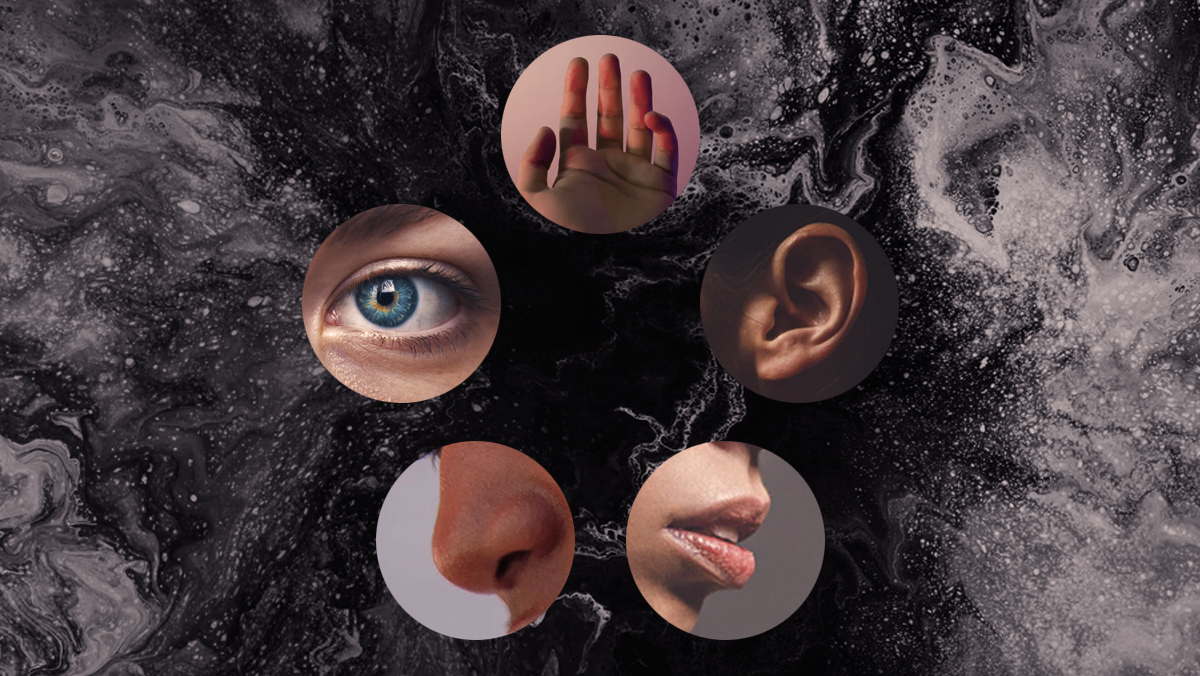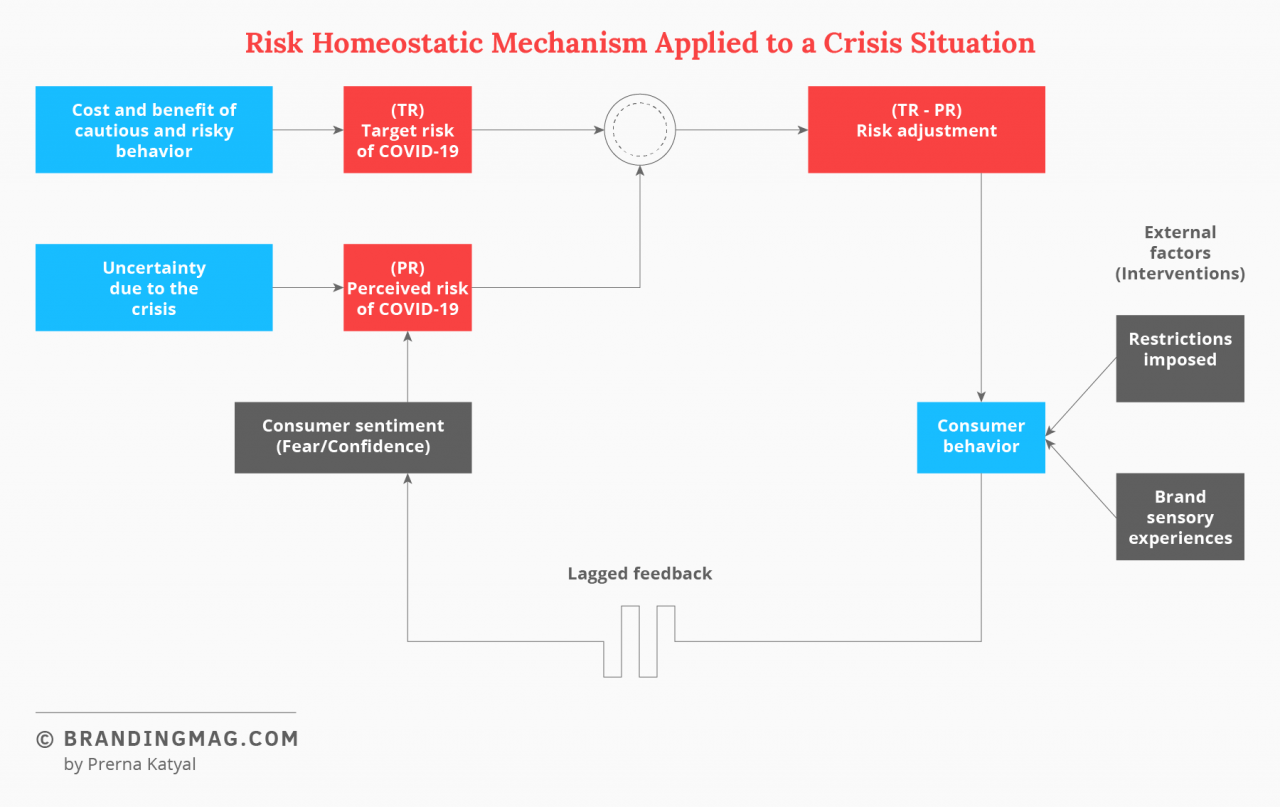
Whenever the world is hit by a crisis, it sends a sudden shockwave in the entire community. People are scared, anxious, and confused. There is a significant loss of trust, people are sluggish in their approach and take calculated steps.
The current pandemic is having a far deeper impact. Never has the world experienced such massive, nationalized and regional lockdowns in most parts of the world. People are encouraged to minimize social interactions and stay indoors as much as possible.
This has made the world we live in truly senseless, i.e. our experiences of the world through the 5 basic human senses (sight, hearing, smell, taste, and touch) have become severely restricted. Long gone are the days when people hugged/shook hands when meeting other people or shared laughter or banter as they juggled between tasks. People no longer feel free to satisfy street-food cravings whenever they want nor do they catch a whiff of their favorite dish as they pass by a restaurant.
With limited social interactions, daily human experiences have changed drastically and so have human sentiment and behavior. For most of the people, the sensory experience these days is as follows:
- Sight: Glued to digital screens (either video conferencing or watching content) with little or no exposure to nature or world outside.
- Hearing: Limited conversations only with people in closed groups of work/neighboring areas. At times, only minimal conversation on essential things. Constant bombarding of negative news.
- Touch: Even the basic gestures like handshakes or hugs are a strict no-no. Close proximity is restricted. People are apprehensive of physical gatherings.
- Taste: With apprehension about eating or ordering from outside, people are restricted to their own or their family’s culinary skills.
- Smell: Limited or no exposure to the outside world. This sense is perhaps dominated by the smell of soap and sanitizers!
Since most people’s experiences through the 5 senses are restricted, so has been their perception of the world. This has further added to the nervousness that people are going through because of increased virus spread.
Why brand experience matters during the crisis recovery phase?
Due to safety concerns, there has been a significant decline in people purchasing goods or availing services. This decreased demand is also causing a significant impact on economies across the globe.
If this apprehension remains, how will the brands and businesses ever recover?
For this, it is important to understand how a human mind behaves. Whenever there is any risk involved, people behave like a thermostat (think about AC, iron, refrigerator, etc.). Only in this case it happens in their minds and is called risk homeostasis.
This concept of Risk Compensation or Peltzman Effect was first postulated in 1975 by economist Sam Peltzman in the context of increasing traffic accidents when the use of seat belts was made mandatory. The theory suggests that “people at any moment compare the amount of risk they perceive at any time with their target level of risk and adjust their behavior accordingly.”
When a crisis hits, people subjectively evaluate the cost and benefit of cautious and risky behavior. The level of risk at which the net benefit is maximized is called the target risk and this remains constant for any particular situation. Let us consider the current pandemic:
The perceived risk, on the other hand, keeps changing based on external factors and interventions. Again, consider the current pandemic – the restrictions imposed by the government, in a way, conveys signals to people that all is not right. Similarly, easing restrictions tends to have the opposite impact.
Businesses and brands across the world can take cues from this approach. What they need to do is to bring the consumer’s perceived risk lower than the total risk at any given point in time.
In a crisis situation, people are concerned about their safety over anything else. People still have dreams, crave to try a new dish, purchase a new car, or travel to their dream destination. But they are apprehensive to make the move. Brands need to build back the lost trust and reinforce to the point of consumers feeling OK to use the products or services. And they can do this by bringing brand experiences alive using the 5 human senses.
When people undergo these experiences, they realize that all is not that bad. They develop an emotional connection and their perceived risk decreases further, so they become open to trying again – and brand loyalty increases.
How brands can leverage sensory marketing to create a memorable brand experience?
Sensory marketing has been previously used by brands to evoke human emotions and make them more inclined towards their brand compared to their peers. To highlight a few: Starbucks never compromises on the coffee aroma, Singapore Airlines patented a scent called Stefan Floridian Waters, Victoria Secret and other luxury brands play classical music to give the premium feel, Airtel has created a jingle that has stuck with people, brands give special importance to packaging or visuals, fonts, colors in communication, cinema theatres use the aroma of popcorn to drive their total sales, and Apple has completely reimagined its store experience with ‘Today at Apple’. But the crisis situation is different.
Firstly, consumers are engulfed with worry and secondly, brands’ interaction with consumers is primarily digital, which restricts the brand’s opportunity to target consumers using this approach.
Considering the new reality, brands need to take up the sensory marketing approach in 2 phases:
1. Make the customers want to try the product
In this phase, brands need to nudge the customers to take product trials at least once. While businesses would be hard-pressed on cash, they need to understand that marketing would play an important role in bringing back customers and they can’t afford to stay silent during this time. Even erstwhile repeat customers have to be approached as if they are new customers in the current times.
Among the 5 senses, the easiest to use is the sight sense. Interesting visuals of food or travel destinations can make customers crave for physical experience. Usage of visual illusions or graphics can be another thing brands need to try to make people stop, think, and ponder. Brands need to focus on technology, virtual 3D experiences, or AR/VR to bring the experience of product trials at home. Just to give an example, automobile brands can bring car trial experience to home and enable digital purchasing.
Brands can also leverage sound to drive nostalgia and make customers reminisce of the time they have spent. Point to note is that these should be sounds that people distinctly recollect. Airlines/hospitality can use the tone of airline safety instructions, train announcements, or flowing rivers, to drive emotions.
Automobile brands can leverage the distinct roaring sound of their engine. Restaurants can leverage instances like ‘cheque please’ which used to be a certain instance that happened every time customers completed a meal. Distinct sounds for notifications – when an order is placed online or some transaction is completed – also helps assure people that the task is being taken care of.
Using the sense of touch during these times is a tricky affair but an important component to be talked about. While contactless deliveries have become the norm, brands need to communicate how they would ensure sanitization, safe distance practices, etc. This is especially true for hospitality, travel, logistics, retail, and e-commerce sectors to assure people that their safety is the brand’s topmost priority.
Taste and smell are two senses which are really tough to invoke at this stage. Brands might want to get creative to leverage one sense to evoke another sense. A classic example for this is Coca Cola’s ‘The First Print Ads You Can Hear’ campaign that used visuals to trick the mind and make people hear the sound of them opening a Coca Cola bottle or can.
2. Make the customers stick
Once customers have been nudged for trial, it is important to ensure that their experience is seamless and leave them happy.
This is where touch, taste, and smell play an important role and should be given due attention. Be it people coming back to their favorite restaurant after a long time, or taking a cab facility to reach office, or coming to the store to purchase a new dress, brands need to ensure safety protocols as promised. Their olfactory senses can be aroused to give a mesmerizing experience and taste buds rekindled wherever applicable.
Once they have had a good experience, the perceived risk goes down and they are more open to experiencing it again. It is important to ensure that brands stick to reinforcing these messages again and again until the crisis situation gets back to normal or consumers feel comfortable again and come back on their own.
Brands also need to note that one misstep at this stage can be quite dangerous and they risk losing the customer forever. Hence, they need to be extremely careful in not just communicating but also living by that experience with full caution, every time.
To summarize, embracing the sensory marketing technique is a brilliant tactic because consumers don’t perceive these as marketing messages. People are not offended and there is no resistance. It fits in seamlessly with whatever they are doing, makes them fully engaged, and subconsciously drives inclination/association towards the brand over their peers. Now, more than ever, brands need to seriously consider this as a part of their marketing strategy if they want to survive the crisis and flourish eventually.
Cover image source: Amanda Dalbjörn, Etty Fidele, isco, Paweł Czerwiński, Samuel Dixon

